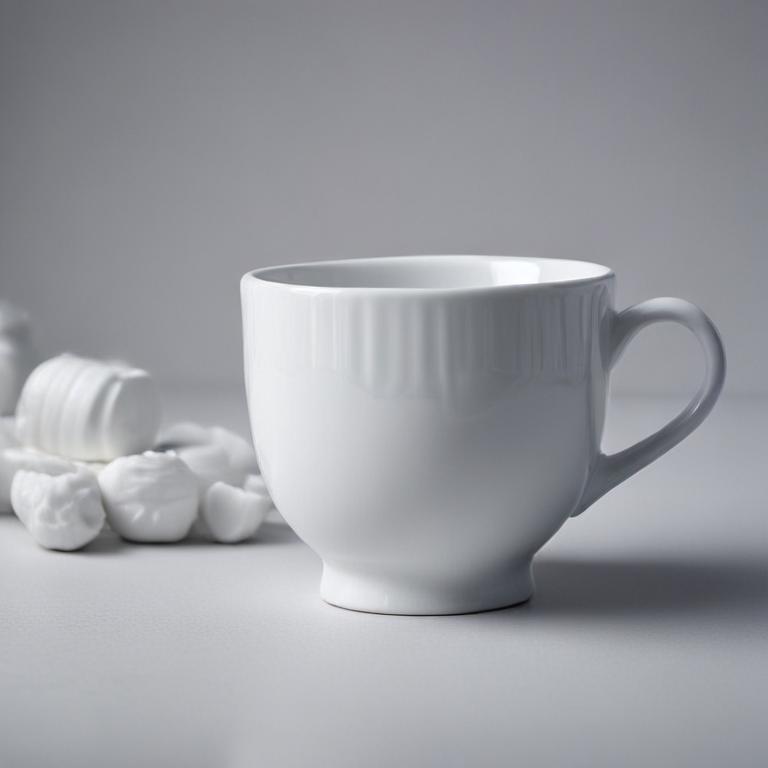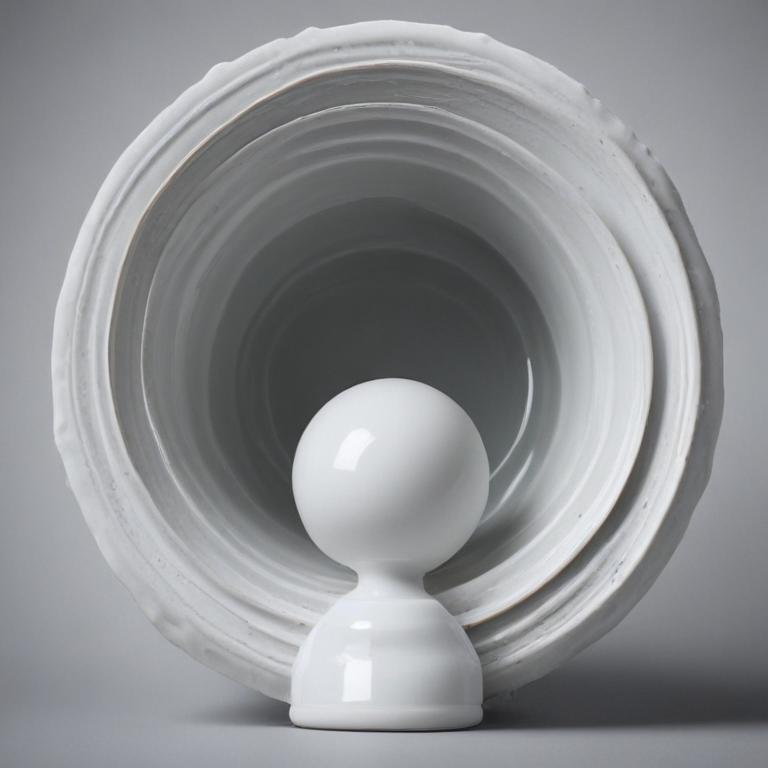发音 (Pronunciation):
IPA: /ˈpɔːrsəleɪn/
中文近似: 波瑟琳
中文意思与词性 (Meanings & Part of Speech):
- 瓷器 (n.)
- 瓷 (信息待补充)
例句 (Examples):
1. The vase is made of fine porcelain.
(这个花瓶是用精美的瓷器制作的。)
2. She collects antique porcelain figurines.
(她收集古董瓷器小雕像。)
用法提示 (Usage Tip):
注意区分 'porcelain' 和 'ceramic',后者更广泛地指代所有陶瓷制品。
更多关于 "porcelain" (More about "porcelain")
单词来源 (Etymology)
该词源自意大利语 'porcellana',意为海螺,因为瓷器的光滑和光泽与海螺相似。
词根词缀解析 (Root & Affix Analysis)
词根词缀解析待补充。
“porcelain”的字母与词根个性化解读
字母象形/引申义 (个性化参考)
- 字母 'p' 的象形或引申含义可能包括: 手/脚 (P=F); 手掌 -> 平; 棒子 (P=B); 音变: P=B=M=F=V。
- 字母 'o' 的象形或引申含义可能包括: 眼睛/嘴 (圆形) -> 张开, 转动; 圆柱; 音变: A=E=I=O=U=W=Y。
- 字母 'r' 的象形或引申含义可能包括: 直立, 向上 (字母R形); 走, 跑 (R象形人); 弯曲 (舌头卷曲); 音变: R=L=M=N。
- 字母 'c' 的象形或引申含义可能包括: 骆驼头 (象形) -> 运输 (car); 抓 (手型); 砍 (弯刀); 包围 (形状); 合并; 叫喊 (嘴型); 走/动; 音变: C=G=K=S。
- 字母 'e' 的象形或引申含义可能包括: 眼睛 (窗户符号引申); 向外 (ex-变体); 元音互换: A=E=I=O=U=W=Y。
- 字母 'l' 的象形或引申含义可能包括: 拉长, 长 (line); 舌头 -> 说 (language); 细, 少; 音变: L=M=N=R。
- 字母 'a' 的象形或引申含义可能包括: 牛角 (象形: 牛头, 力量, 能力); 下面宽上面尖 (形状) -> 延伸, 远处, 高处, 方向, 指示。
- 字母 'i' 的象形或引申含义可能包括: 我 (an, any, one -> 人); 水滴 -> 水 (ice); 尖, 一点, 小 (inch); 元音互换: A=E=I=O=U=W=Y。
- 字母 'n' 的象形或引申含义可能包括: 水 (M=N); 鼻音 (nose); 突出/生长/新生; 门 -> 否定 (no, not); 连接; 音变: N=M=L=R。
词根/组合解读 (个性化参考)
- 单词中的片段 'el' (源自词根/组合 'el') — 含义: 生长, 成长 (al变形); 后缀:小东西; (来源提示: el = al 变形; novel); (音变参考: a=e).
学习提示:以上针对单词 porcelain 的字母和词根解读,主要基于提供的特定象形及词根资料。这些提示旨在启发联想,而非绝对定论。更通用的记忆规则和原则请参考首页。英语词源复杂多变,实际应用中请结合更全面的词源词典和语言学知识进行深入学习。
常用词组 (Common Phrases)
- fine porcelain: 精美的瓷器
- porcelain doll: 瓷娃娃
其他语言 (Other Languages)
- 德语: Porzellan
- 法语: porcelaine
字母整体创意联想
单词 'porcelain' 像是一个精致的瓷器,字母的弯曲和圆滑线条让人联想到优雅的瓷器形状。
逐字母创意解读
中文谐音助记
“porcelain”可以记为“波瑟琳”,想象一个美丽的波浪形瓷器。
相关电影/名言
"This porcelain was made in a time when craftsmanship was revered."
(这个瓷器是在工艺被尊重的时代制作的。)
- 《美丽心灵》(2001)
趣味知识/故事
瓷器最早是在中国发明的,后来传入欧洲,成为贵族和富人家庭的象征。瓷器的制作工艺非常复杂,需要高温烧制,才能形成坚固的质地和光滑的表面。
拓展信息
瓷器通常分为硬瓷和软瓷两种,硬瓷在烧制过程中需要高温,通常更为坚固和耐磨。
在艺术和收藏领域,古董瓷器非常受欢迎,尤其是清朝时期的青花瓷,因其独特的纹饰和历史价值而备受追捧。
网络参考 (More about "porcelain" from the Web)
Porcelain - Wikipedia
Porcelain (/ ˈ p ɔːr s (ə) l ɪ n /), also called china, is a ceramic material made by heating raw materials, generally including kaolinite, in a kiln to temperatures between 1,200 and 1,400 °C (2,200 and 2,600 °F). The greater strength and translucence of porcelain, relative to other types of pottery, arise mainly from vitrification and the formation of the mineral mullite within the ...
Porcelain | Definition, History, Types, & Facts | Britannica
porcelain, vitrified pottery with a white, fine-grained body that is usually translucent, as distinguished from earthenware, which is porous, opaque, and coarser.The distinction between porcelain and stoneware, the other class of vitrified pottery material, is less clear.In China, porcelain is defined as pottery that is resonant when struck.In the West, it is a material that is translucent ...
What Is Porcelain, and Why Has It Been Cherished For Centuries?
Porcelain is a type of ceramic material that is highly durable and has high-performance characteristics due to its production process. Learn about the history, benefits and types of porcelain, from tableware to tile, and how to distinguish it from other ceramics.
更多图片 (porcelain More Images)

